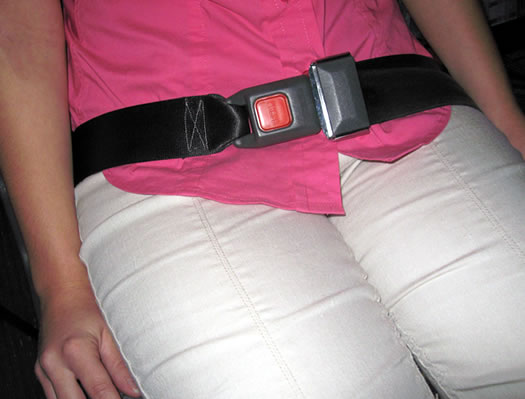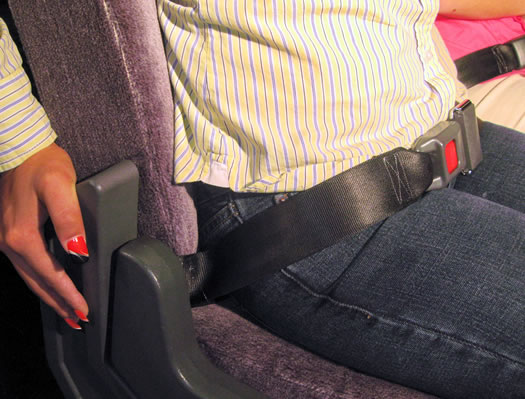Please wait...
Why Use The Safe Harness System?
The Safe Harness Lap Belt System helps prevent injury and death from coach bus accidents.
Unique design helps to ensure coach bus passenger safety
The unique, self securing design of the SafeHarness System helps to ensure coach bus safety. During a collision the single strap design of the SafeHarness System absorbs and attenuates the forward momentum of the passenger.
The SafeHarness System beneficially restrains the passenger during an accident while reducing occurrence of injuries associated with a rigidly anchored restraining system.
Great for commuters, recreational & Business travelers, and high school & college teams
SafeHarness provides motor coach travelers with the light, portable, and easy to use SelfHarness system to ensure that they have a seat belt available for their protection. Some of its uses include:
- Commercial transportation companies who provide regularly scheduled cross-country service
- Commuter bus lines
- Colleges and universities particularly those with athletic teams, bands, band front and cheerleaders
- Schools, teen tours, and camps which use coach buses for field trips and other transportation
- Coaches that provide service for cross-country tours
- Charter bus companies
- Dedicated buses that are in regular service to entertainment and recreations venues

Common misconceptions about lap belts on motorcoaches
MYTH: Lap belts cause more injuries.
TRUTH: “Injury severity was mitigated by the use of lap belts.”
› Read More ( bottom of page seven, “Probable Cause”)
MYTH: Lap belts cause seat Anchorage failures.
TRUTH: “…the causes of the seat anchorage problems in all cases were impact from unrestrained passengers and intrusion during the accident sequence.”
› Read More ( page two paragraph three)
MYTH: Compartmentalization of bus coach seating is enough to provide passenger safety.
TRUTH: “All belted dummies remained in their seats, while the unbelted dummies ended up in the aisle or in the seats in front of them. There was no evidence of any “compartmentalization” in the unbelted seat configurations, as the unbelted dummies did not stay in their seats.”
› Read More (page twenty paragraph four)

